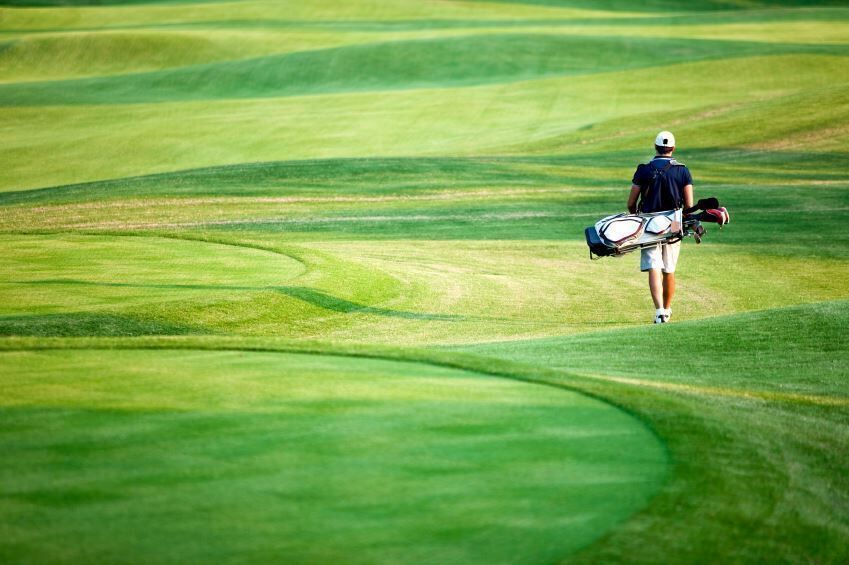Signs & Symptoms of a Pulled Muscle in a Leg

Features
A pulled muscle is essentially a strain of a muscle or tendon, resulting from a tear in the muscle fibers.
Calf muscle
A calf muscle pull will leave the muscle feeling sore, tender and stiff. For golfers, you might notice a calf pull just walking the course. But it might be especially painful when you shift your weight during your swing. Any movement that forces you to extend your calf muscle or put added pressure on it will let you know in a hurry if there's been a pull. Keeping your leg elevated above your head as much as possible for the first day after a pull and applying ice packs to the calf four times a day for about 20 minutes at a time should help relieve the pain and help the effected muscle fibers begin repairing themselves.
Hamstring
There are three basic muscles that make up the hamstring in the back of the thigh. People most likely to have pulled or strained hamstrings are sprinters, football players and other athletes in high-speed sports. But golfers can pull a hamstring, too. A low-grade hamstring pull will allow you to walk normally, but with some discomfort. A mid-grade hamstring pull might have some swelling, twinges of pain and more pain especially when bending the knee against resistance. A more serious pull or tear will show swelling almost immediately.
Quadriceps
The muscles at the front of thigh are the most powerful in the body, but they are still vulnerable to pulls and strains. Like hamstrings, they are more susceptible to injury during high-velocity sports and sports with contact. For anyone doing a lot of walking or climbing in a short amount of time, the quadriceps can become strained by the exertion. This one of the reasons why a few simple stretches of your quadriceps are good ways to prepare them for a round of golf. Be careful not to overstretch them because that is an easy way to pull those muscles before you begin to play.
Diagnosing a pulled muscle
When diagnosing a pulled leg muscle, a doctor will ask you about your medical history and your symptoms, so be ready to answer questions about when the pain started, what you were doing when the pain started, what helps relieve the pain and how you would describe the pain (twinge, throb or ache). The doctor will also feel the affected area, checking for swelling, tenderness and the pain centers. You will also be asked to bend or flex your muscles to help show the doctor where the pain is emanating from and what kind of resistance makes it hurt. For serious injuries, an MRI can help show possible tissue damage to the muscle.
Prevention/Solution
The best advice for preventing pulled leg muscles is to take time to warm up and cool down for golf or any activity. Simple stretches--not any that tax your flexibility too much, though--will help prepare your muscles for a few hours of exercise. Similar stretches after a round of golf are advised to loosen up any muscles that might have tightened during play.